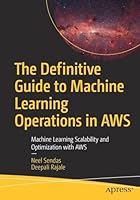
Architecting Cloud Native Applications
- Length: 526 pages
- Edition: 1
- Language: English
- Publisher: Packt Publishing
- Publication Date: 2019-04-16
- ISBN-10: 1838643311
- ISBN-13: 9781838643317
Apply cloud native patterns and practices to deliver responsive, resilient, elastic, and message-driven systems with confidence
Key Features
- Discover best practices for applying cloud native patterns to your cloud applications
- Explore ways to effectively plan resources and technology stacks for high security and fault tolerance
- Gain insight into core architectural principles using real-world examples
Book Description
Cloud computing has proven to be the most revolutionary IT development since virtualization. Cloud native architectures give you the benefit of more flexibility over legacy systems.
This Learning Path teaches you everything you need to know for designing industry-grade cloud applications and efficiently migrating your business to the cloud. It begins by exploring the basic patterns that turn your database inside out to achieve massive scalability. You’ll learn how to develop cloud native architectures using microservices and serverless computing as your design principles. Then, you’ll explore ways to continuously deliver production code by implementing continuous observability in production. In the concluding chapters, you’ll learn about various public cloud architectures ranging from AWS and Azure to the Google Cloud Platform, and understand the future trends and expectations of cloud providers.
By the end of this Learning Path, you’ll have learned the techniques to adopt cloud native architectures that meet your business requirements.
This Learning Path includes content from the following Packt products:
- Cloud Native Development Patterns and Best Practices by John Gilbert
- Cloud Native Architectures by Erik Farr et al.
What you will learn
- Understand the difference between cloud native and traditional architecture
- Automate security controls and configuration management
- Minimize risk by evolving your monolithic systems into cloud native applications
- Explore the aspects of migration, when and why to use it
- Apply modern delivery and testing methods to continuously deliver production code
- Enable massive scaling by turning your database inside out
Who this book is for
This Learning Path is designed for developers who want to progress into building cloud native systems and are keen to learn the patterns involved. Software architects, who are keen on designing scalable and highly available cloud native applications, will also find this Learning Path very useful. To easily grasp these concepts, you will need basic knowledge of programming and cloud computing.
Table of Contents
- Understanding Cloud Native Concepts
- The Anatomy of Cloud Native Systems
- Foundation Patterns
- Boundary Patterns
- Control Patterns
- Deployment
- Testing
- Monitoring
- Security
- Cloud Native Application Design
- How to Choose Technology Stacks
- Optimizing Cost
- Scalable and Available
- Amazon Web Services
- Microsoft Azure
- Google Cloud Platform
- What’s Next? Cloud Native Application Architecture Trends







